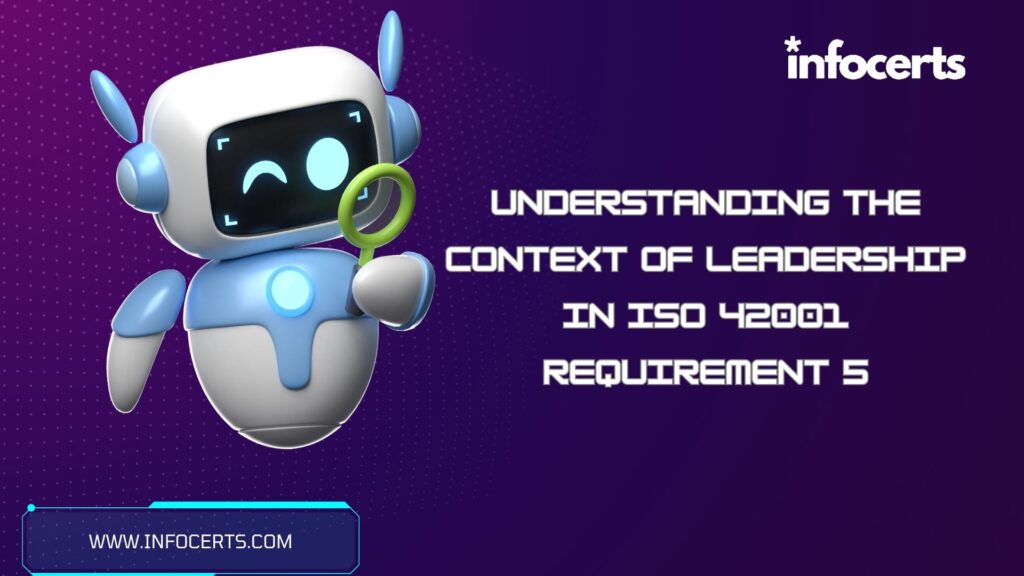In the realm of Environmental Management Systems (EMS), effective leadership is paramount to the success of any organization’s sustainability initiatives. ISO 42001, the international standard for EMS, emphasizes the importance of leadership in Requirement 5, which outlines the need for top management commitment and involvement in driving environmental performance. Let’s delve into the context of leadership within ISO 42001 and explore its significance, implementation strategies, and auditing techniques.
Significance of Leadership in ISO 42001:
Requirement 5 of ISO 42001 underscores the crucial role of leadership in establishing and maintaining an effective EMS. Leadership sets the tone for the organization’s environmental objectives, policies, and strategies, ultimately influencing employee engagement and organizational culture. By demonstrating commitment to environmental sustainability, top management fosters a culture of responsibility and accountability throughout the organization.
Implementation Strategies:
Implementing effective leadership within the context of ISO 42001 involves several key strategies:
- Top Management Commitment: Senior executives must visibly demonstrate their commitment to environmental performance by allocating resources, setting objectives, and integrating environmental considerations into strategic planning.
- Clear Communication: Leaders should effectively communicate the organization’s environmental goals, policies, and expectations to all stakeholders, fostering awareness and buy-in at every level.
- Training and Empowerment: Providing training and empowerment opportunities equips employees with the knowledge and skills necessary to contribute to the organization’s environmental objectives, reinforcing a sense of ownership and responsibility.
Auditing Techniques:
Auditing leadership within ISO 42001 involves assessing the extent to which top management fulfills its responsibilities and drives environmental performance. Auditors may employ various techniques, including:
- Document Review: Reviewing policies, objectives, and strategic plans to ensure alignment with environmental goals and Regulatory Requirements.
- Interviews: Engaging with top management to assess their understanding of environmental issues, level of commitment, and involvement in EMS implementation.
- Observation: Observing leadership behaviors and practices within the organization to evaluate their impact on environmental performance.
Example:
Consider a manufacturing company aiming to achieve ISO 42001 certification. The CEO publicly commits to environmental sustainability, allocating funds for implementing Eco-Friendly technologies and establishing a dedicated environmental management team. Regular communication channels are established to disseminate environmental policies, and employees receive training on waste reduction and energy conservation. Audits conducted periodically assess the effectiveness of leadership in driving environmental performance, leading to continuous improvement initiatives.
In conclusion, effective leadership is integral to the success of ISO 42001 compliance and environmental sustainability efforts. By prioritizing leadership commitment, clear communication, and Employee Empowerment, organizations can create a culture of environmental responsibility that aligns with ISO 42001 requirements and fosters long-term success.
FaQs:
- What is ISO 42001?
- What does ISO 42001 Requirement 5 entail?
- Why is leadership important in ISO 42001?
- What are some implementation strategies for leadership in ISO 42001?
- How is leadership audited in ISO 42001?
——————————————————————————————————————–
Infocerts, 5B 306 Riverside Greens, Panvel, Raigad 410206 Maharashtra, India
Contact us – https://www.infocerts.com

